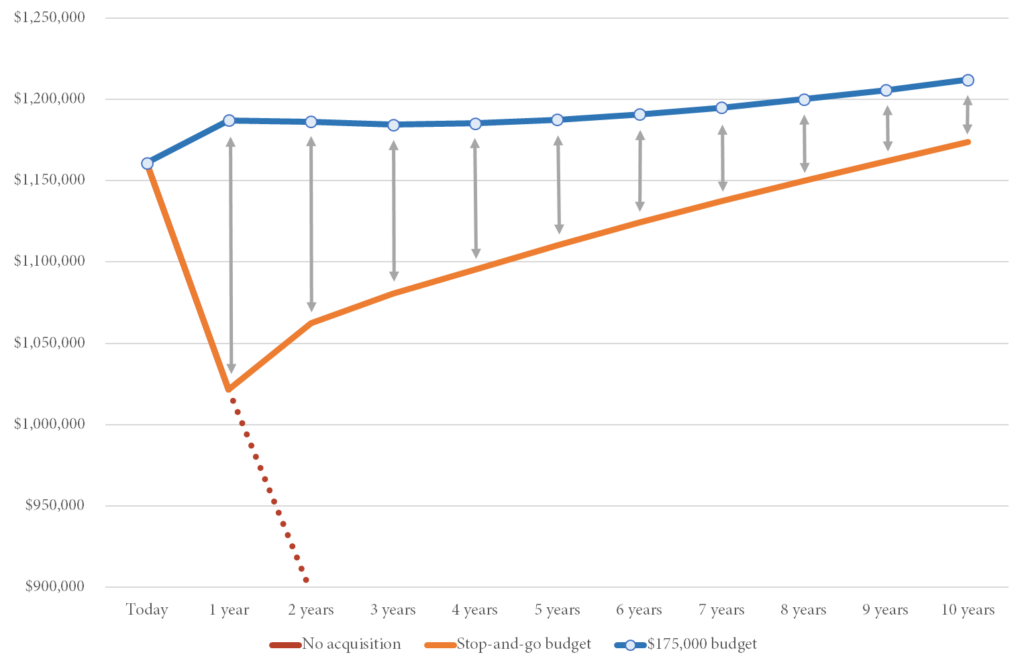It was a typical Tuesday afternoon when I got the call. The voice on the other end of the line was strained, almost frantic. It was Sarah [not her real name], a fundraising manager from one of our long-time nonprofit clients. I’d worked with her for years and knew her to be calm under pressure, so hearing the anxiety in her voice immediately set off alarm bells.
“Hey, how are you?” I asked, trying to ease into the conversation.
“I’m… not great,” she admitted with a nervous chuckle. “I need your help, and it’s urgent. The board wants to slash the budget for our donor-acquisition campaigns. They’re saying it costs too much, and we have other priorities this year.”
I could almost see her pacing through her office. “But Sarah, you know as well as I do, cutting donor-acquisition even for a single year could hurt you long-term.”
She sighed. “I know. I’ve been telling them that, but the problem is I can’t prove it. They’re all about the short term, and I can’t get them to see the bigger picture. They’re just looking at this year’s numbers and not thinking about what happens next. I’m at a loss.”
I felt her frustration deeply. Sarah was passionate, dedicated to her cause, and driven by results, but right now, she was up against a wall of numbers that didn’t paint the whole picture. The board members were passionate people, too, but had limited expertise in fundraising. While focusing on immediate concerns, they were about to make a decision that could cost them far more than they realized. But how could she convince them of that when they were looking for hard figures, not hypotheticals?
We ran our advanced simulation analytics, plugging in her organization’s fundraising data and modeling two scenarios: one with donor acquisition continuing as usual and one where it froze for a single year. The results were staggering.

After just one year of halting donor acquisition, even though it seemed like it would save money in the short term, would end up costing them over $1 million in lost fundraising revenue over ten years. That single decision would still have cost the charity close to $50,000 a decade from now.
Equipped with that simulation, Sarah reconvened with the Board, and they immediately dropped the idea. They were smart people. They just needed to see the data.
That one phone call reminded me of a truth we often forget in the fast-paced, number-crunching world of fundraising: short-term decisions can have long-term consequences. And sometimes, the best way to make the right choice is to take a step back, look at the bigger picture, and think ahead… with the right analytical tools at hand.







